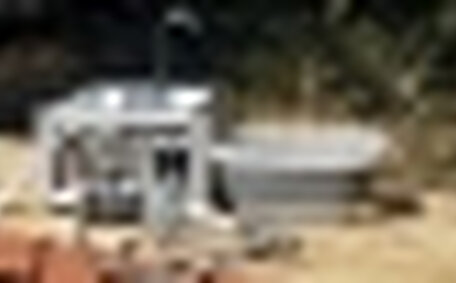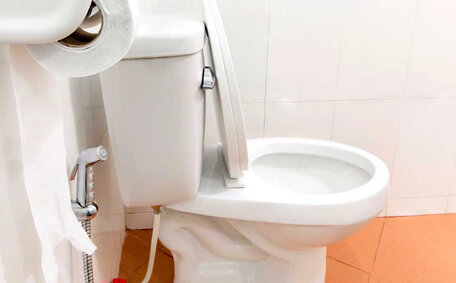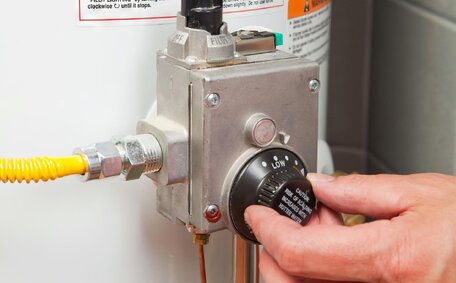Understanding Why Hot Water System Insulation is Important
Insulating your hot water system is crucial for improving energy efficiency and reducing unnecessary heat loss. Hot water storage tanks and pipe insulation for pipes connected to heaters can lose a substantial amount of heat if left uninsulated. This wasted energy must then be replaced by the system to reheat your water, increasing costs and environmental impact.
By installing insulation around tanks and lagging pipes, the rate of heat loss is greatly minimised. The water in your water heater stays hotter for longer, meaning less reheating is required. Well-insulated systems can maintain stable water temperature levels above 60°C more easily, which is essential for preventing bacteria growth.
Some key reasons why insulation matters for hot water systems include:
- Prevents heat loss through tank and pipe walls - trapping warmth
- Slashes energy consumption needed for water heating
- Maintains safe water temperatures to inhibit bacteria
- Cuts greenhouse emissions from reduced system operation
- Saves money on energy bills in the long run
With easy DIY insulating options available and potential energy savings of up to 25%, it’s well worth retrofitting insulation to improve the efficiency of your hot water system.
Reducing Heat Loss to Improve Energy Efficiency
Installing insulation around hot water tanks and lagging exposed pipes is one of the most effective ways to enhance the energy efficiency of your system. By preventing heat loss to the surrounding air, insulation enables water to stay hotter for longer without needing frequent reheating.
Insulating a hot water system can reduce standby heat losses by up to 25%. This leads to substantial energy savings over time, given it helps keep water heating costs down, which alone accounts for about 23% of household energy bills.
Pipe lagging is also hugely worthwhile - insulating just 1 metre of piping can save energy equivalent to that needed to reheat up to 400L of water!
Some key benefits of hot water insulation in terms of energy efficiency include:
- Less standby heat loss from storage tanks
- Minimised pipe heat dissipation to surroundings
- Lower energy consumption for water reheating
- Significantly reduced greenhouse gas emissions
- Lower energy bills over the system lifetime
With the compelling financial and environmental incentives to insulate, it’s well worth making this small upfront investment that pays off every time you use your hot water system most frequently. DIY insulating products make it simple to retrofit existing systems yourself.
DIY Methods to Insulate a Hot Water System
Insulating your existing hot water system is a straightforward DIY job that can lead to great energy savings over time. Here are the step-by-step methods for adding insulation:
Water Heater Blanket
Start by purchasing a pre-cut water heater insulation blanket, designed specifically to fit standard tank sizes. This will have adhesive backing strips to keep it firmly in place.
- Turn off power and water supply, and drain the tank if possible
- Thoroughly clean the tank exterior with a wire brush and cloth
- Measure tank height and width to ensure correct blanket size
- Peel backing paper and apply adhesive strips to the tank
- Wrap blanket around tightly, joining edges together neatly
Pipe Lagging
Insulating your hot water pipes when exposed prevents heat loss to the surroundings. Use pre-split foam tubing lagging for easy DIY fitting:
- Clean and dry pipes thoroughly
- Check pipe diameter and cut lengths of tubing to suit
- Open seam and fit tightly around each pipe section
- Seal join neatly with adhesive backing strips
Ensure insulation meets BCA regulations - pipes over 1 metre must have at least 13mm insulation. Take care not to cover the PTR valve when lagging.
Considerations
- Turn off water supply before insulating inline valves
- Leave tank connections accessible for anodes etc
- Check pressure/temp relief valve discharge point direction
- Use high density insulation for best heat retention
With the right prep and precautions, insulating your hot water system is straightforward DIY job. For gas systems or tricky access, consult a professional installer.
Installing Pipe Lagging
Installing pipe lagging is a simple way to reduce heat loss from hot water pipes. To install hot water systems effectively, the most common materials used are foam tubing or pipe sleeves. Key steps to insulate your pipes correctly include:
Where to Install
Any exposed hot water pipes should be insulated, particularly sections running through unheated areas like subfloors or roof spaces. It’s worthwhile lagging at least the first 1-2 metres connected to the hot water heater.
Choosing Lagging Size
Measure your pipe diameter and match it to the correct size pre-slit foam tubing. Optimal insulation thickness is usually 13-19mm. Pipe sleeves slide easily over piping and secure with velcro straps.
Installation Process
- Clean and dry pipes thoroughly
- Slit lagging seam & wrap securely around pipe
- Seal joins with adhesive tape or securing straps
- Take care not to restrict valves or interfere with clips
Consider applying a final outer layer of insulating tape for added stability. Maintain safe clearance from flammable materials as lagging may get moderately warm.
With correctly sized quality lagging fitted snugly, you can prevent up to 90% of heat loss from hot water pipes. DIY installation is quick and easy.
Using Insulation Blankets for Storage Tanks
Installing an insulation blanket is one of the most effective ways to prevent heat loss from a hot water storage tank. These specially designed blankets envelope the entire tank with an insulating barrier that traps warmth inside.
Choosing the right size blanket for your tank is important. Measure the height and diameter of your unit and select a blanket that will fit snugly around it. Many blankets come with Velcro joins or adhesive strips to securely fasten them in place.
Fitting a insulation blanket is straightforward - simply wrap it around the tank and neatly seal the edges as per the manufacturer’s instructions. Take care not to cover valves or hamper access to connections like heating elements or anodes.
For optimal heat retention, high density fibreglass or foil-faced blankets provide excellent thermal resistance. The insulation they provide can reduce standby energy losses by up to 25%, saving you money while benefiting the environment.
So envelop your hot water storage tank in a cosy insulating blanket to maximise energy efficiency and conserve precious heat.
Professional vs. DIY Insulation Installation
While DIY insulation methods can be straightforward for standard water heaters, professional installation is recommended for more complex systems.
Licenced plumbers have specialised expertise in properly insulating all components of intricate hot water setups. This includes working safely with gas systems, correctly lagging large bore pipes, and ensuring compliance with regulations.
For homeowners seeking energy savings without the hassle, Colyton Plumbing offers a complete professional insulation service. Our team handles everything from start to finish - no effort required on your part!
We conduct on-site evaluations to determine optimal materials and coverage for your system. Our meticulous installation combined with high performance insulation provides superior heat retention. You benefit from the maximum energy efficiency gains while enjoying absolute peace of mind.
Don’t put it off any longer - take control of your energy bills and carbon footprint. Contact Colyton Plumbing on 1300 349 338 or email to arrange your insulation upgrade. Be sure to ask about our spring hot water specials!
Choosing the Right Insulation Materials
When it comes to insulating your hot water system, you have a variety of material options to choose from. Some key factors to consider when selecting insulation are:
Material Types
- Foam - Pre-slit flexible tubing or pipe sleeve. Easy DIY install but degrades over time.
- Polyethylene - Durable plastic wraps or bubble insulation. Moisture resistant.
- Glasswool Batts - High density insulation blankets. Excellent effectiveness but require professional install.
- Vinyl - Hardwearing outer protection layer with foam inner. Combines durability with insulation.
Application Suitability
Consider both indoor and outdoor system components when choosing materials. Glasswool works well for indoor tanks, while closed cell foam suits exposed outdoor piping best.
Operating Conditions
Factor in insulation contact with potential moisture, steam or chemicals. Faced batts handle moisture better than plain variants. Check product technical specifications for compatibility.
Sizing and Fit
Measure all dimensions of tanks, pipes and valves to tailor insulation perfectly. A tight snug fit ensures maximum heat retention and efficiency.
With some handy tips on attributes and fit, selecting the optimal insulation materials for your system is straightforward. Combining products like foam tubing and vinyl blankets can give both ease of install and durability over time.
Safety Precautions When Installing Insulation
When installing insulation on your hot water system, taking proper safety precautions is crucial. Handle insulation materials carefully, as some types like fibreglass can cause skin irritation. Wear gloves, long sleeves and a face mask if using loose insulation blankets or batts.
Take care when using sharp tools like utility knives to cut insulation tubing or pipe wrap. Work slowly and deliberately, keeping blades away from hands and body. Secure any piping or tanks properly before insulating, so there is no risk of items falling.
Be wary of electrical and water connections when lagging pipes or enclosing tanks. Avoid covering electrical cords or junction boxes - consult an electrician if necessary. Check your blanket doesn’t obstruct the pressure/temp relief valve or anode fittings which require periodic access.
Exercise caution around gas hot water systems, ensuring nothing interferes with flammable gas lines or combustion airflow. Turn off the system when working close by. Keep insulation well clear of flues and exhaust vents to prevent fire risks.
Never insulate over valves, gauges or controls that require adjustment, draining or servicing access. Ensure you leave tank inlets and outlets accessible.
Take a methodical approach when insulating a more complex system, keeping track of any concealed components. Having a professional plumber’s guidance can be invaluable for identifying and navigating potential hazards.
With some diligent planning and awareness, you can safely add insulation yourself. But if unsure, contact the experts at Colyton Plumbing to ensure your system is upgraded securely.
The Financial and Environmental Benefits
Installing insulation provides extensive financial and environmental benefits from your hot water system.
The cost savings from enhanced energy efficiency can be considerable. Insulating tanks and pipes lowers standby heat losses by up to 25%, reducing energy consumption for water heating. For the average home, this translates into annual savings of $160-220 on utility bills.
The insulation also extends the lifespan of your hot water unit by preserving system components from temperature fluctuations. Fewer cycles of heating elements and valves wearing out means less repairs or replacement costs down the track.
financial incentives, insulation offers major environmental upsides. Decreased energy use directly lowers carbon dioxide emissions from power generation. Annual CO2 savings per household range from 0.3 to 1.2 tonnes depending on system size and insulation effectiveness.
As environmentally-conscious plumbers, Colyton prioritises eco-friendly practises in all our hot water work. We specialise in insulation solutions that maximise energy conservation while upholding strict safety standards. Contact us today to start saving both money and emissions.






